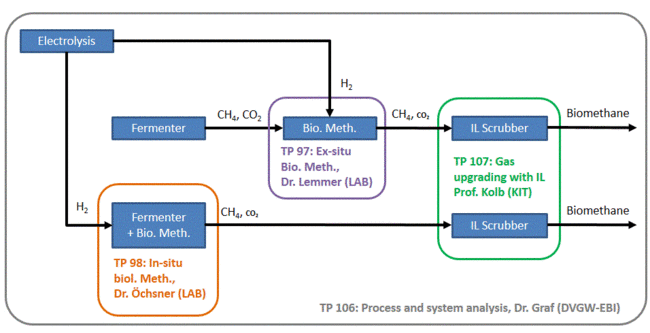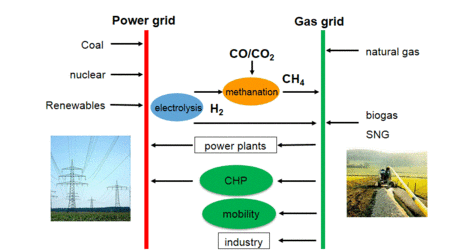Collaborative project: Application of biological methanation for power-to-gas concepts
As part of the ongoing energy system transition the existing centrally oriented energy system with a high share of conventional energy generation will be transformed into a more decentralized system with higher shares of renewable energies. Integration of fluctuating renewable energies into the electricity market however requires load-side flexibility for further expansion, as well as vectors between the various energy grids (gas, electricity and heat networks).
Power-to-gas technologies are promising vector- and storage technologies that enable the linking of these grids, therefore representing a key technology for the energy system transition.
Fluctuating energy, e.g. from photovoltaic or wind energy plants, can be converted by electrolysis into H2. In a second step methane is produced from H2 and carbon dioxide. Methane (or substitute natural gas) can then be stored and transported in the existing natural gas grid and be used to produce electricity on demand or for mobility as fuel.
For production of methane from H2 and CO2 catalytic thermochemical processes can be used (Sabatier process). Another interesting possibility is the biological methanation by use of hydrogenotrophic methane bacteria.
The joint research project comprises various innovative strategies for the use of biological methanation in power-to-gas concepts. Three subprojects are focusing on technological innovations, one overarching projects includes a system- and process analysis of power-to -gas concepts.


